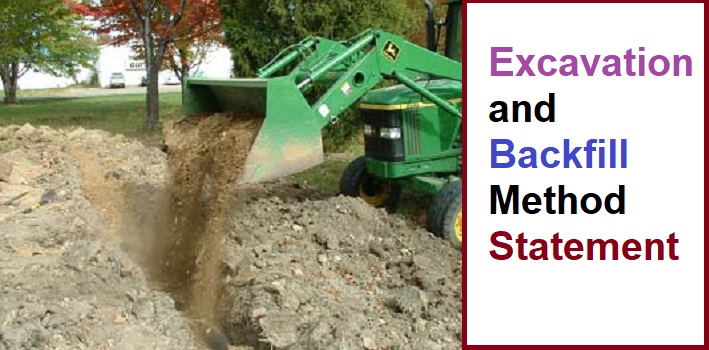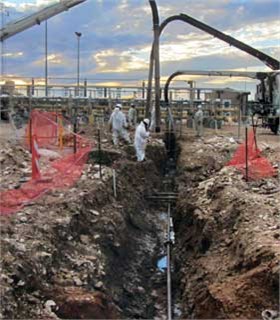Some Ideas on Concrete Contractors You Need To Know
Wiki Article
Some Of General Contractor
Table of ContentsGet This Report on Mini ExcavatorThe Ultimate Guide To Excavation Contractors Near MeSome Known Questions About Trencher.What Does Mini Excavator Mean?An Unbiased View of Trencher


Scrapers or Pans excavate soil in one place, haul and also unload the soil in an additional spot (excavator). It is challenging to match the performance of scrapers for cut/fill soil operation if the haul range is much less then a mile. Scrapers are typically drawn by a rubber tire wheel tractor and are occasionally pushed with the cut area by an excavator.
There are often times that scrapes are not made use of for site grading and also a dump truck is utilized: the haul may be to long, the haul may cross roadways where scrapes are not allowed, tough rock may be come across, devices availability, etc. Dump vehicles remain in common use as well as probably call for little discussion.
Many trucks have a top-hinged tailgate that can not dump any rock wider after that the tailgate width. "Rock body" beds, on the various other hand, have no tailgates as well as can discard any type of size rock, although their quantity capability is decreased. These web links reveal devices specs for several usual dump trucks. Compaction Devices enhances the thickness of the dirt and also sometimes gives a smooth, rolled surface.
8 Simple Techniques For Trencher
From an easy test pit to percussion drilling to core drilling the proprietor has significantly a lot more costly options that produce increasingly better data concerning the website underground. The Owner on a 100,000 SF structure project might license twenty boring areas with split spoon dirt examples taken until rock is gotten to as well as then core examples of rock.Understanding the type as well as quality of rock (from the core examples) as well as location of rock (from the dirts boring) is a real benefit in jobsite planning. Conversely, the Proprietor of a 100,000 SF building might make a decision to proceed with no geotechnical screening whatsoever. The decision concerning geotechnical testing is usually made by a Proprietor with no input from the Building and construction Supervisor.
An understanding of the approximate area of the rock helps the Building Manager to plan the series of actions following rock excavation. If rock is in one corner of a huge building project, for instance, the planet excavation can begin at the opposite end of the structure in order to begin structure work soonest.
Beginning the structure job early would be a good concept if the rock might be gotten rid of by ripping. Nevertheless, if the rock is very tough and also requires substantial blasting, it might be sensible to hold structure job up until the blasting is finished. The Building and construction Manager ought to collaborate these kinds of choices as well as use all the technical date offered.
Indicators on Concrete Contractors You Should Know
Unidentified excavation stipulates that all rock or other unanticipated materials (leaving out harmful products) come across in the sitework will be the obligation of the Service provider at no change in contract expense. An unclassified excavation is easier from a book-keeping point ofview and puts the duty for geotechnical problems onto the Sitework Contractor.Exactly How Water Influences Sitework? It's outstanding what a hefty rain can do to a construction job. Before the rainfall, the website might be completely dry, hefty equipment efficiently moving earth, the other professions efficiently executing their job. Within hrs the project can be a sloppy, mud-hole with worker efficiency cut to regarding 10%.
In the majority of locations of the globe, the Building and construction Manager have to bear in mind a simple truth: IT WILL CERTAINLY RAINFALL. Great planning can reduce the damage and disruption of a hefty rainfall to a jobsite. Usually the excavation and also grading is entrusted to the Sitework Specialist (as well as their Foremen is accountable to supervise and route the hefty devices and operators).
Consequently the Building and construction Manager need to be continuously familiar with what rain will do to the task website. It is not uncommon for the Sitework Supervisor to work their heavy tools for optimal efficiency and hope it does not rainfall. One of the most effective means to plan for rain is to slope all grades to drain and also to smooth rolled the surface before a rain.
The Best Strategy To Use For Demolition
The Building Supervisor should be well-balanced sufficient to insure that heavy rainfall does not quit working on the job longer than required. Daily discussions with Sitework Foremen might be called for to accomplish this goal. Any time excavation is required listed below the existing water table on a task, the process of dewatering should be considered.In a truly natural dirt, the water travels so slowly excavating companies near me via the clay or silt that dewatering is not normally required for the relatively brief time of excavation. Dewatering might be required for a solitary footing excavation or for a whole job site. One of the most typical dewatering techniques are trench drains, deep wells as well as well factors.

Ground water infiltration can additionally be decreased by cutoff techniques such as sheet loading. High dewatering costs have faded the earnings margins on far as well lots of projects.
This choice should constantly be considered when analyzing the prospect grading and excavating contractor of dewatering. Clearly the option is just viable if gravity can run the water to lower ground. Trench drains pipes can be reduced with a backhoe and loaded with a coarse, granular material (# 4 stone as an example), yet treatment must be exercised in picking the water right here electrical outlet type as well as place.
Facts About General Contractor Uncovered
A siphon, by meaning, uses air pressure to carry water from one altitude, up over a challenge, to a reduced elevation. The pipelines in a siphon system need to be airtight as well as some resourcefulness is usually needed to entirely fill up the siphon pipe. The siphon pipeline have to be complete for the siphon to begin.A deep well includes a pump, hose as well as a vertical well casing. The pump consumption is at the base of the well casing (generally some crushed rock is placed down there as a filter medium) (concrete contractors). The water is pumped up the pipe, out of the well casing, and to an appropriate discharge area.
In a coarse sand, as an example, a huge area can be pumped to near the pump intake elevation. A much less absorptive dirt, on the various other hand, reduces the efficiency of a deep well. Since the pump is typically at the end of the deep well, there are no elevation constraints as a result of vacuum lift, and also deep wells can lower the groundwater over 50 feet.
On the base of the wellpoint there is a 2 foot long display and also shutoff, water jets out of this shutoff as well as creates an opening right into which the wellpoint pipeline can be decreased. This hole is typically made a larger diameter (as an example 10 inches) to permit for a coarse sand backfill to aid filter the water (concrete contractors).
Report this wiki page